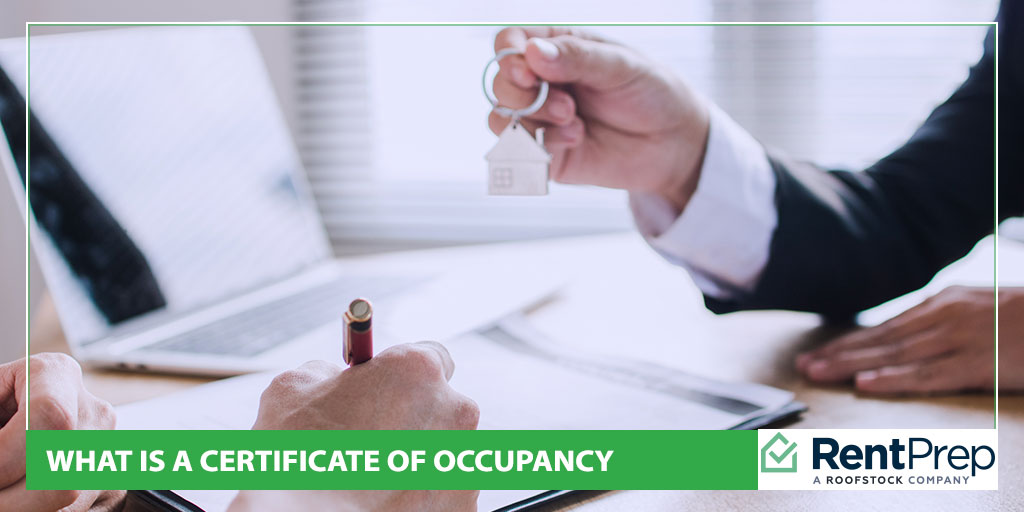
Ever wondered, “What is a certificate of occupancy?” It’s like your property’s official stamp of approval, issued by the local building and zoning department.
This legal document specifies the approved uses of the property, such as residency or commercial activity, and confirms that the building is suitable and safe for those purposes. As a landlord, it’s essential to have a valid certificate of occupancy for each property you own.
But who is responsible for obtaining a certificate of occupancy, and how do you get one? How much does it cost, and how often do you need a new one?
Whether you’re an established landlord, a first-time property buyer, or merely curious about the ins and outs of real estate, our comprehensive guide dives deep into the world of certificates of occupancy.
We’ve broken down its importance and nuances for you. Let’s guide you through the steps to ensure your property’s safety and compliance with regulations.
Table Of Contents On Certificates Of Occupancy
A certificate of occupancy is legally required for all properties that you own or manage. Find out more with our guide to this important document.
- What Is A Certificate Of Occupancy?
- When Do You Need To Obtain A Certificate Of Occupancy?
- How Do You Obtain An Existing Certificate Of Occupancy?
- How Much Does It Cost To Obtain A New Certificate Of Occupancy?
- Certificates Of Occupancy And Landlords
- Certificate Of Occupancy FAQs
- Are certificates of occupancy transferable?
- Do I need a certificate of occupancy for a commercial property?
- What information is included in a certificate of occupancy?
- Can I appeal if my application for a certificate of occupancy is denied?
- What is a temporary certificate of occupancy?
- What is a certificate of rental property occupancy?
- Obtain A Certificate Of Occupancy
What Is A Certificate Of Occupancy?
A certificate of occupancy is a legal document issued by local building or zoning departments authorizing what purpose a property can be used for and that it’s safe to use for that purpose. This certificate is issued for all types of buildings, including residential, commercial, and industrial.
It will also include the occupancy limit for that building.
The sections below will focus principally on certificates of occupancy for residential properties, but the same general rules apply to all types of real estate.
When Do You Need To Obtain A Certificate Of Occupancy?

Certificates of occupancy should be obtained during the construction of a new property.
Once the document has been issued, it does not expire, so there is no need to obtain a new one unless the use of the property changes—for example, from commercial to residential—or there are major renovations.
But let’s take a closer look at when you may need to obtain or present a certificate of occupancy.
New Construction
The original certificate of occupancy for any new building should be obtained during the construction process. There are usually several phases of inspections required during construction that will eventually result in a certificate of occupancy being issued.
For example, in Chicago, during the foundational construction phase, you will need to have inspections done of the underground plumbing and structural fittings, including rebar, structural steel, and concrete pours.
During construction, the carpentry, electrical system, plumbing, and ventilation will be inspected, among other things When the construction is complete, final inspections will be required, and a fire-prevention bureau inspection is needed to issue the final certificate of occupancy.
Selling A Building
When you’re buying a property, you’ll need a copy of the certificate of occupancy to finalize financing and legally take ownership. However, it’s the responsibility of the seller to provide a copy of the certificate. If there is no certificate, the seller must cover the cost of obtaining one.
Changing How A Property Is Used
If you want to change how a property is used, you will need to apply for a new certificate of occupancy. For example, if you want to convert what was a commercial storage facility into residential apartments, you’ll need a new certificate that authorizes the new use and states new occupancy limits.
Majorly Renovating A Property
If you make major renovations that change a building’s fundamental structure, you will need to apply for a new certificate of occupancy. Obtaining the document should begin when you apply for a permit.
What constitutes a major renovation versus a mainly aesthetic remodel? Consider the following examples of major renovations:
- A change in floor plan, such as dividing a unit into two dwellings or combining two units to create a larger dwelling
- Removing any load-bearing walls or adding new floors, as these may change the structural foundations of the building
- Significant plumbing or electrical changes, such as installing new HVAC systems or upgrading electrical panels
- Exterior changes to the building’s facade or roof structure
Your architect and builders should be able to advise you when your planned changes are likely to trigger the need to apply for a new certificate of occupancy.
How Do You Obtain An Existing Certificate Of Occupancy?
If you need a copy of an existing certificate of occupancy, you can get one from the local building authority. For example, New York City has an online database where you can search for existing certificates of occupancy.
In most cases, you will need to pay a small fee to get a copy of the certificate. However, in New York City, you can export the document directly from the database as a pdf.
How Much Does It Cost To Obtain A New Certificate Of Occupancy?

The cost of obtaining a certificate of occupancy for a new build or a major renovation varies greatly depending on where your property is located, local laws, and the type of property.
While you may only pay a one-off permit fee, which includes inspections, for renovations to a single family home, or for larger properties such as apartment complexes, you can expect to pay for several different inspections conducted by different local departments.
For a new block of units, you will need to pay for inspections of the building structure, for a fire inspection, plus electrical and plumbing inspections. In certain jurisdictions, you may also need to pay impact fees to help cover the cost of the new occupancy on local services.
For a single residential property, you are more likely to pay a one-off fee that includes both the inspections and the certificates. Rates vary depending on where you live and the type of property. For example, in Tamarac, Florida, it costs $260 for a safety certificate, plus $89 and $3 for every 1,000 square feet of building space. In West Chicago, it costs around $100 plus an additional $0.12 per square foot of property.
You should check local regulations and fees at the start of your building or renovation project to ensure that you are compliant.
Certificates Of Occupancy And Landlords
Landlords should ensure they have certificates of occupancy for all their properties before tenants are allowed to move in. They should also ensure that the property continues to be in a habitable condition.
Tenants can issue complaints if they feel the property is not up to standard. Common complaints include:
- Insufficient heat: Areas of the country have different regulations, but as a general rule, if the outside temperature falls below 60 degrees Fahrenheit, a minimum indoor temperature of 68 degrees Fahrenheit should be maintained. Read more about the tenant’s right to climate control here.
- Insufficient smoke and carbon monoxide detection: Districts have specific rules about the minimum number of smoke and carbon monoxide detectors that should be in a home based on its size and layout. Read more about smoke alarm requirements here.
When these types of complaints are made, you may be issued a violation and given a maximum number of days to correct the problem —for example, 21 days. However, unless there are major structural issues, these do not undermine the general certificate of occupancy for the building.
If a tenant asks to see a certificate of occupancy, you must provide it. In some cases, it will need to be displayed at the property. See our guide to landlord disclosure requirements, including certificates of occupancy, here.
In some jurisdictions, landlords will need additional documents to demonstrate that their property is habitable and can be rented to tenants. These can include:
- A rental license that registered the property with local authorities and often includes an inspection to ensure the property meets habitability standards
- Completion of a habitability checklist, provided in some jurisdictions, that covers things such as heating, plumbing, and safety features.
- A lead-based paint exposure for properties built before 1978 that disclose the presence of lead paint and the associated dangers
- Property inspection reports that detail the condition of the property and any maintenance issues that need to be addressed
- Maintenance and repair records to demonstrate that the property is being kept in a habitable state
- Documentation demonstrating the installation of smoke and carbon monoxide alarms according to requirements
- Evidence of compliance with health and safety regulations as it relates to things such as waste disposal and pest control
The legally required documentation depends on your local jurisdiction, so check local government websites for specific details.
Certificate Of Occupancy FAQs
Below are answers to some of the most frequently asked questions about certificates of occupancy.
Are certificates of occupancy transferable?
Certificates of occupancy are issued for individual properties and have no expiration date. While the owner who built the property is responsible for obtaining the first certificate of occupancy, they should pass this certificate to anyone who later buys the property.
The certificate remains valid as long as subsequent owners do not make any major renovations.
Do I need a certificate of occupancy for a commercial property?
Yes, certificates of occupancy are required for commercial properties, and there may be additional requirements based on the proposed use and occupancy limit.
What information is included in a certificate of occupancy?
A certificate of occupancy typically states the property address, a description of the approved use, the maximum occupancy, and the date that the certificate was issued.
Can I appeal if my application for a certificate of occupancy is denied?
Yes, you can appeal if your certificate of occupancy is denied. Usually, you will be given a time window following specific inspections to fix problems and schedule a re-inspection.
What is a temporary certificate of occupancy?
Temporary certificates of occupancy will sometimes be issued when a building is substantially complete and can be occupied but there are still unfinished things to be completed before a full certificate of occupancy can be issued. These issues must not adversely affect the health or safety of the occupants.
What is a certificate of rental property occupancy?
Certificates of rental property occupancy are not common in U.S. law, but they do exist in some jurisdictions. For example, in Ohio, landlords need to apply for a certificate of rental property occupancy on an annual basis. The required inspection will not consider structural features, which are already covered by a certificate of inspection, but rather habitability.
Obtain A Certificate Of Occupancy
As a landlord, you should have certificates of occupancy for your all properties to demonstrate that they are safe and fit for their intended purpose. These are usually obtained at construction and do not expire unless major changes are made to the property. You should obtain a certificate of occupancy as part of any real estate purchase.
Certificates of occupancy confirm that the overall structure of a building is safe and fit for purpose but does not cover elements that make a rental property “habitable.” Landlords are separately responsible for ensuring that homes are fit to live in, with appropriate heat and smoke detectors, no dangerous mold, and so forth.

